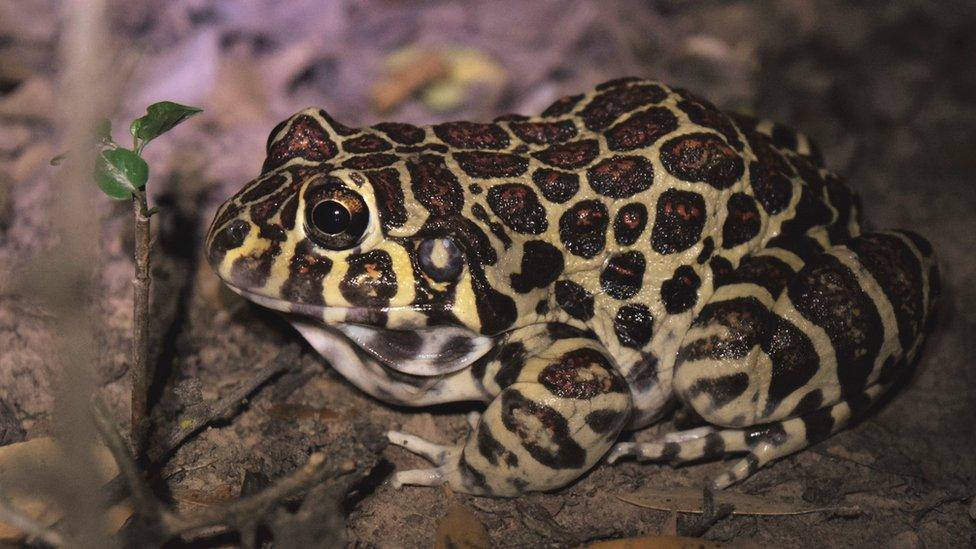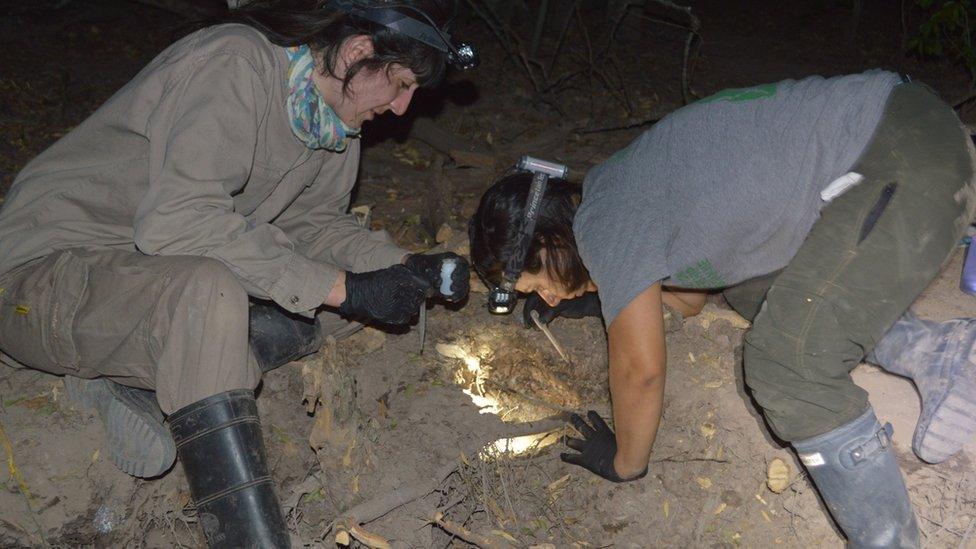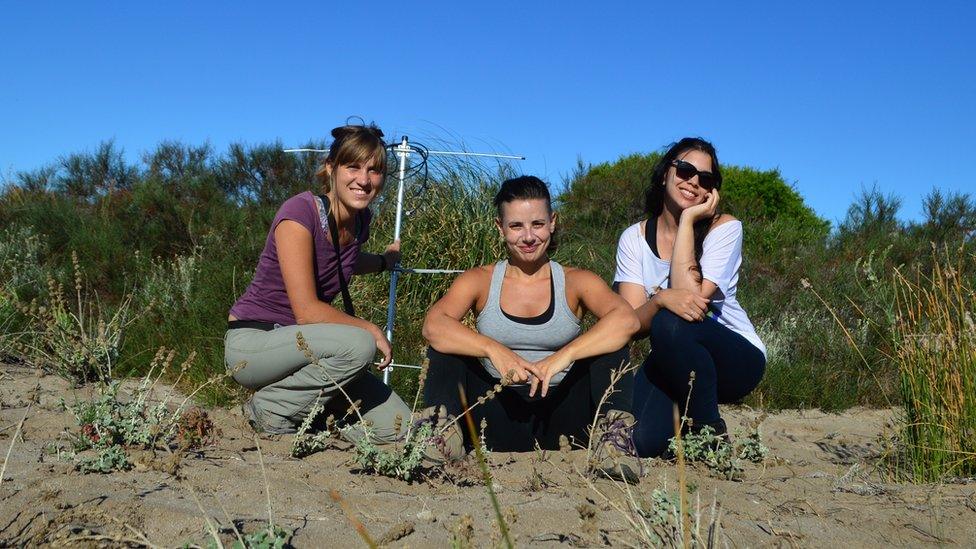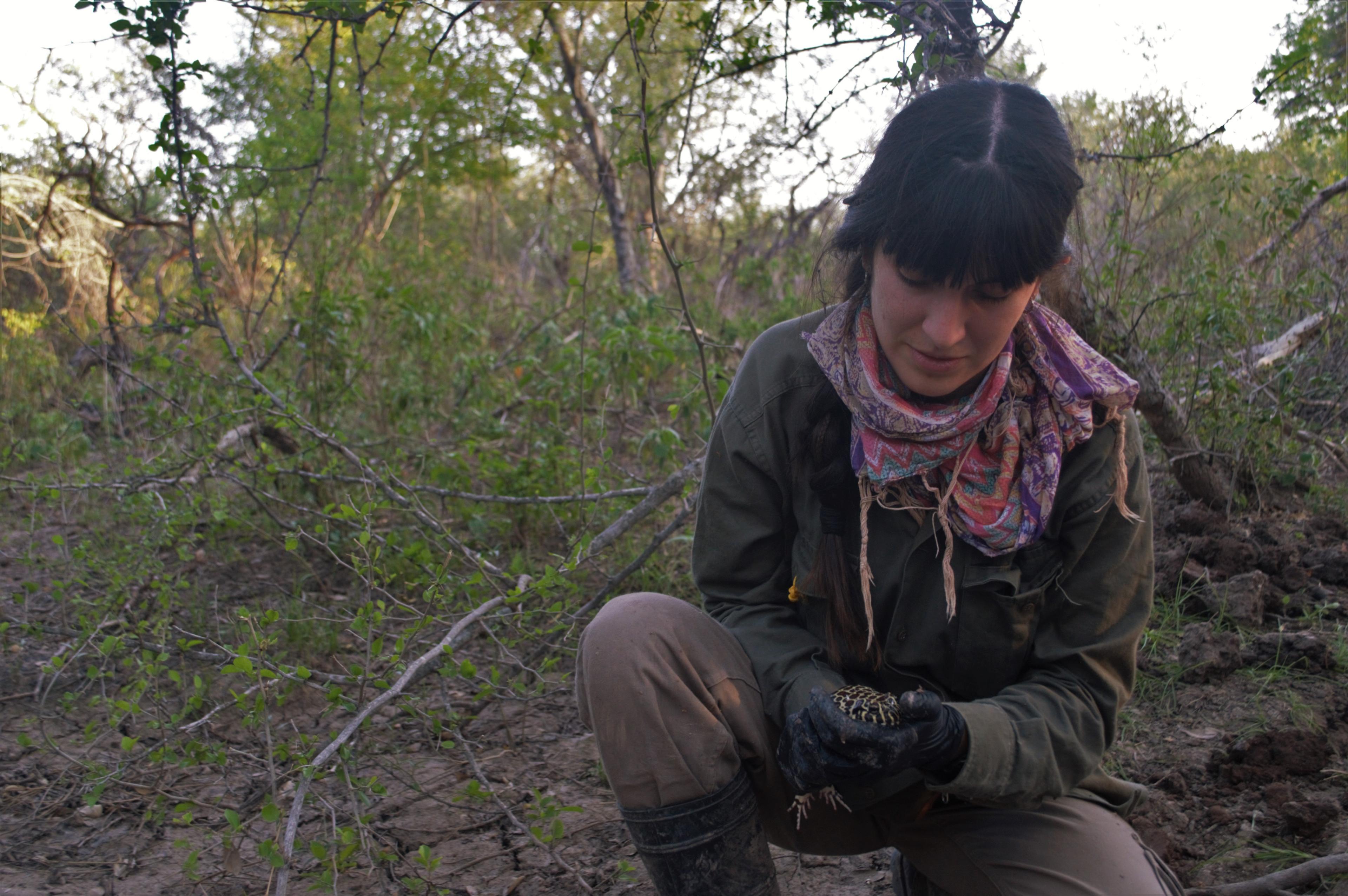Sex life of rare 'leopard-print' frog revealed
- Published

The frog has leopard-like spots
Scientists have braved 50C heat and venomous snakes to track down a "leopard-print" frog virtually unknown to science and learn how it reproduces.
Argentinian conservation scientists are fighting to protect the tiny Santa Fe frog, which is under threat as its habitat in one of the world's driest forests, the Dry Chaco, is cut down.
They discovered it hides in caves, emerging only to call for a mate.
And for the first time they found tadpoles of the species.
"It's not been an easy journey so far, but we're determined to do what we can to secure the future for this wonderful amphibian," said Isis Ibañez, who leads the Santa Fe frog project, based in Buenos Aires.
The Santa Fe frog (Leptodactylus laticeps) is largely unknown to science despite being discovered more than a century ago.
Found only in Argentina, Bolivia and Paraguay, the frog is now rare due to the loss of the tropical dry forests in which it lives.
The researchers set up camera traps to locate the brightly-coloured frogs and study their behaviour.
Most frogs attract a mate by calling loudly from a pond, stream or swamp, but this species lives underground.
The team found the males emerged at nightfall to advertise their presence, then hopped back down their burrows with interested females.

Finding the frogs meant searching in the dark
After digging for hours at night they eventually found evidence of eggs and tadpoles for the first time.
Investigating the frog's breeding behaviour is the first step towards protecting it in the wild.
By drawing attention to the plight of the frog the conservation scientists hope to highlight the biodiversity of the Dry (or Grand) Chaco - and other animals at risk of extinction.
"This species is a clear example of why we have to defend the forest in the Dry Chaco," said team member, Camila Deutsch. "We don't have much time."
The scientists are also liaising with local community leaders, hunters and farmers to learn more about the frog and how to better protect it.

Three of the team members: Camila Deutsch, Gabriela Agostini and Sofia Perrone

The Grand Chaco has a mixed landscape of low, dry forests and savannas
The Grand Chaco is a large expanse of forest and dusty plains straddling parts of Bolivia, Argentina and Paraguay.
The Chaco woodlands have been gradually cleared over the past few decades to make way for cropland and ranches.
The forest has one of the highest deforestation rates on the planet, external though it attracts less attention than its Amazon neighbour.
The area has been dubbed "El Impenetrable" and even "hell on Earth" for its inaccessibility and extreme temperatures. Temperatures can reach 50C in the daytime and there is very little rainfall.
Yet wildlife thrives in the harsh conditions, including hundreds of different birds, mammals, reptiles and amphibians.
"It's a dry forest with an incredible biodiversity," said Gabriela Agostini.

The fourth team member, Isis Ibañez, holding a Sante Fe frog
Amphibians are at high risk of extinction. A pathogenic fungus has been ravaging populations around the world for about 40 years.
The animals are also under pressure from habitat loss and hunting.
The Santa Fe frog project is supported by the Conservation Leadership Programme (CLP) - an initiative run by Fauna & Flora, BirdLife International and the Wildlife Conservation Society.
Follow Helen on Twitter @hbriggs, external.